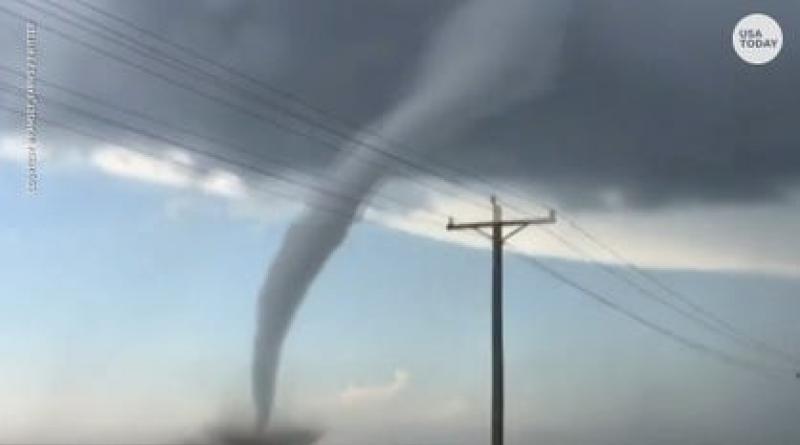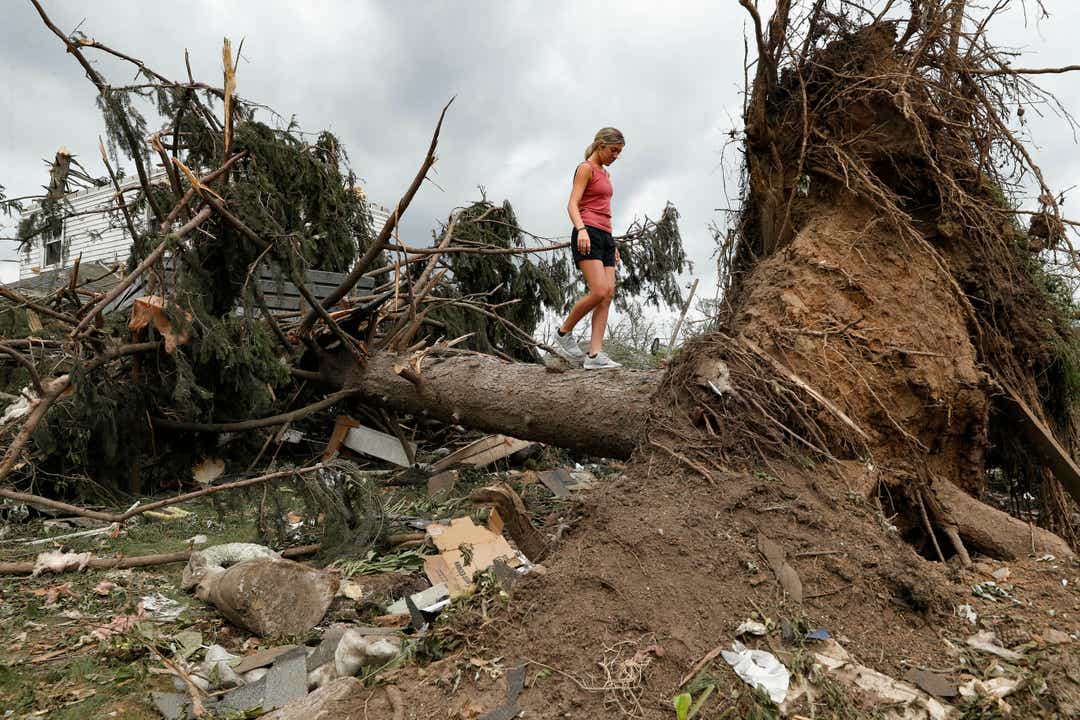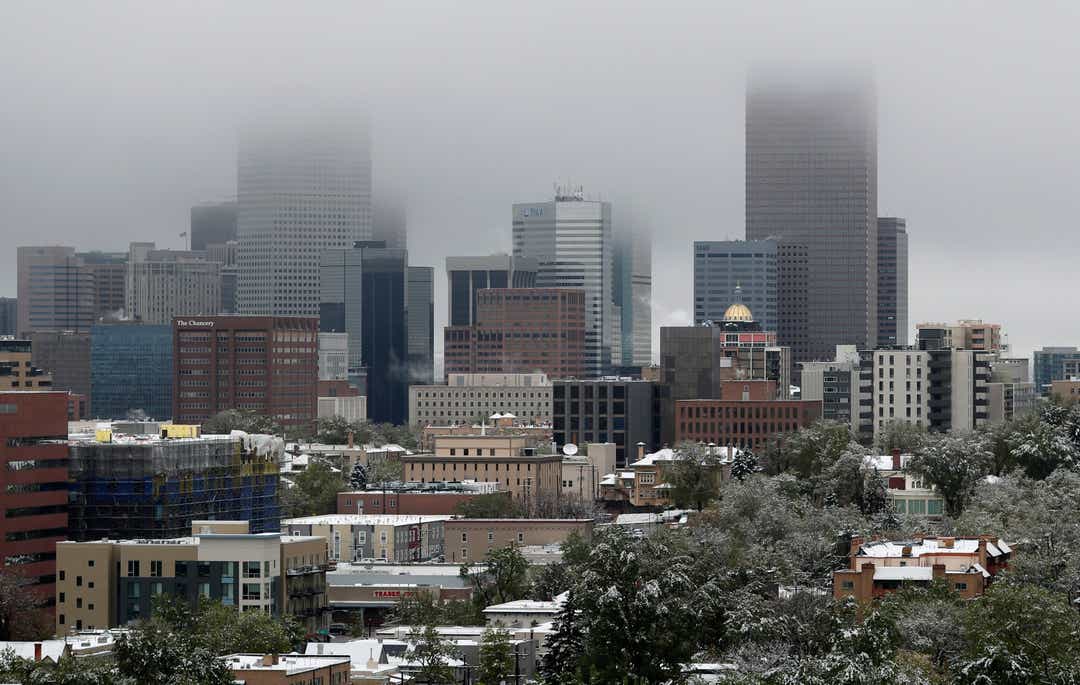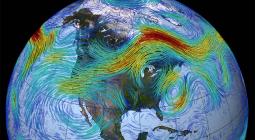Floods, tornadoes, snow in May: Extreme weather driven by climate change across US.

Flooding along the Mississippi River is the worst it’s been since 1927. More than 50 tornadoes touched down during the Memorial Day weekend. In Denver, it snowed more than three inches last week.
Climate scientists say this is only the beginning of what will be decades of increasingly dangerous and damaging extreme weather – and there’s no question that much of it’s being driven by global warming.
The scientific data is too clear and too overwhelming to come to any other conclusion, said Richard Rood, a meteorologist and professor of climate research at the University of Michigan in Ann Arbor.

DroneBase via AP
The coherent and convergent data signals climate scientists across the globe are seeing “make it extraordinarily unlikely that this is just a set of typical weather events that just happen to occur at the same time,” Rood said.

John Minchillo, AP
Odds of dangerous weather increasing
Global warming has already increased the odds of record hot and wet events happening in 75% of North America, said Noah Diffenbaugh, a professor of climate science at Stanford University in Palo Alto, California.
For dry events such as droughts, it’s 50% of North America, said Diffenbaugh, who has provided testimony and scientific expertise on climate change to the White House, the governor of California and U.S. congressional offices.
The scientific evidence is not strong enough for a definitive link between global warming and the kinds of severe thunderstorms that produce tornadoes.
The Fourth National Climate Assessment released in November found that as the planet warms because of human-caused climate change, heavy downpours are increasing in the Midwest. From the early 1990s to the mid-2010s, very heavy precipitation events in the Midwest increased by 37%. The 1,500-page congressionally mandated report was produced by the U.S. Global Change Research Program.
The report said "an increase in localized extreme precipitation and storm events can lead to an increase in flooding. River flooding in large rivers like the Mississippi, Ohio, and Missouri Rivers and their tributaries can flood surface streets and low-lying areas, resulting in drinking water contamination, evacuations, damage to buildings, injury, and death."
The United States is seeing clear increases in historical terms of severe heat, heavy rainfalls and storm-surge flooding.
“There are also many different individual extreme events for which we have robust evidence of an influence of historical global warming on the probability and/or severity of that particular event,” said Diffenbaugh.
Those events include the hot, dry summer over the central United States in 2012 that led to severe declines in crop yields, the recent California drought that lasted seven years, the storm-surge flooding during Superstorm Sandy in 2012 and the record rainfall delivered to Houston by Hurricane Harvey in 2017, said Diffenbaugh.
In the Midwest, the characteristics of winters are changing, they’re getting warmer and wetter, followed by large amounts of spring rain.
“That’s a formula for flooding. You’re about to see the Mississippi enter into its longest-duration flood. You’re seeing remarkable duration in the flooding on many Midwestern rivers,” said Rood.

David Zalubowski, AP
Only the beginning
Heat-trapping carbon dioxide and other greenhouse gases emitted into the atmosphere by burning coal, oil and other fossil fuels are the cause of the higher temperatures.
The extra carbon dioxide has caused temperatures to rise to levels that cannot be explained by natural factors, scientists report. And humans have increased the Earth's atmospheric carbon dioxide concentration by more than a third since the Industrial Revolution began, according to NASA.
The Earth’s average temperature has already increased by 1.4 degrees since 1880, according to NASA’s Earth Observatory.
“We are at the beginning of what’s going to be a number of decades where the climate is going to be changing very fast. During that time we will have many unexpected weather events,” said Rood.
This comes as the White House plans to stop reporting on the effects of global warming past 2040 rather than through the end of the century as was previously the case, according to a report this week in The New York Times.
Scientists say this is misleading because the climate models show the largest effects of global warming hitting after 2040 unless carbon emissions are decreased.
“They well know that if we fail to act to bring down our carbon emissions over the next decade, this will lock in disastrous melting of the ice sheets, sea-level rise, and a rise in devastating weather extremes decades down the road,” said Michael Mann, a professor of atmospheric science at Pennsylvania State University.
The Environmental Protection Agency responded to the Times report by saying that the previous use of inaccurate modeling focused on worst-case emission scenarios didn’t reflect real-world conditions and needed to be “thoroughly re-examined and tested.”
In fact, Mann said, it’s an effort to misrepresent and downplay the seriousness of the problem in service of the fossil fuel interests to which he and others believe the Trump administration is beholden.
“They don’t want people to look down the road. They want to inflict a collective societal myopia that benefits their fossil fuel industry friends at the expense of us, our children, grandchildren and future generations,” he said.
29 May 2019
USA TODAY




